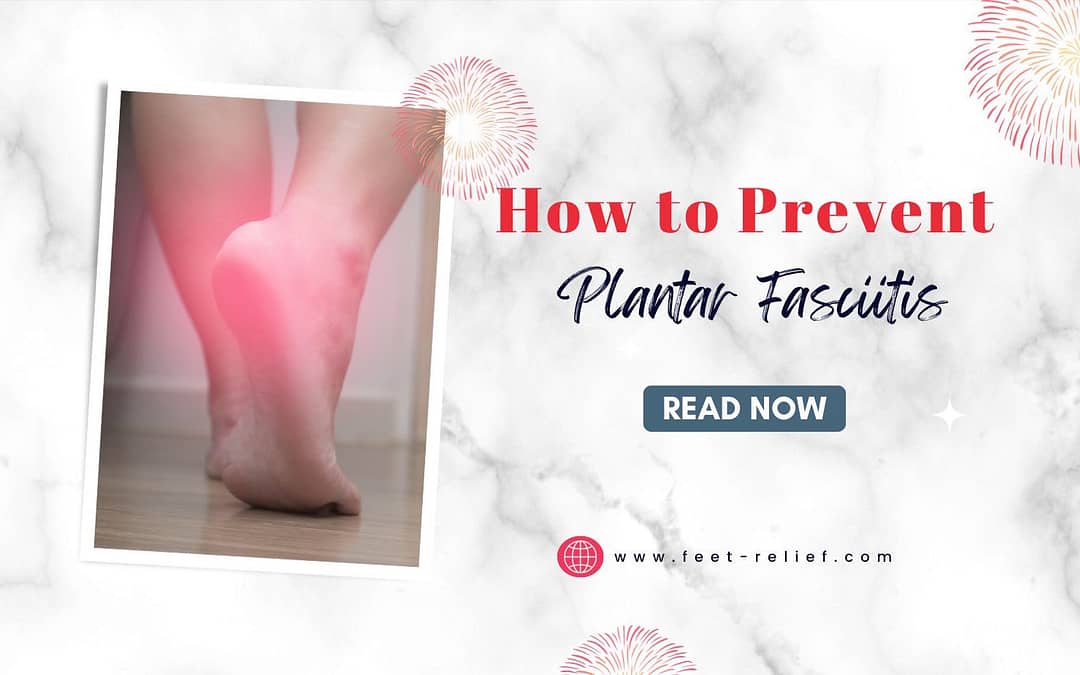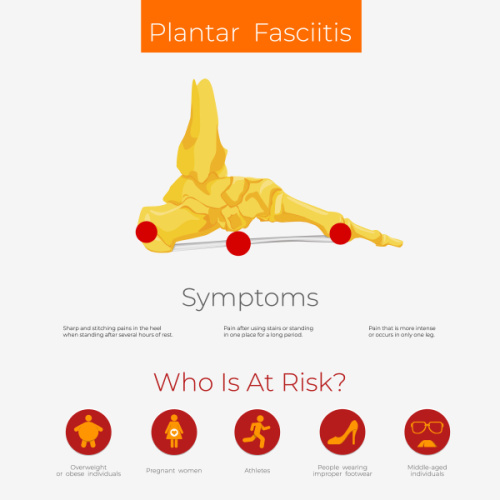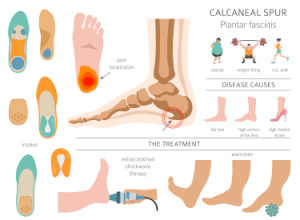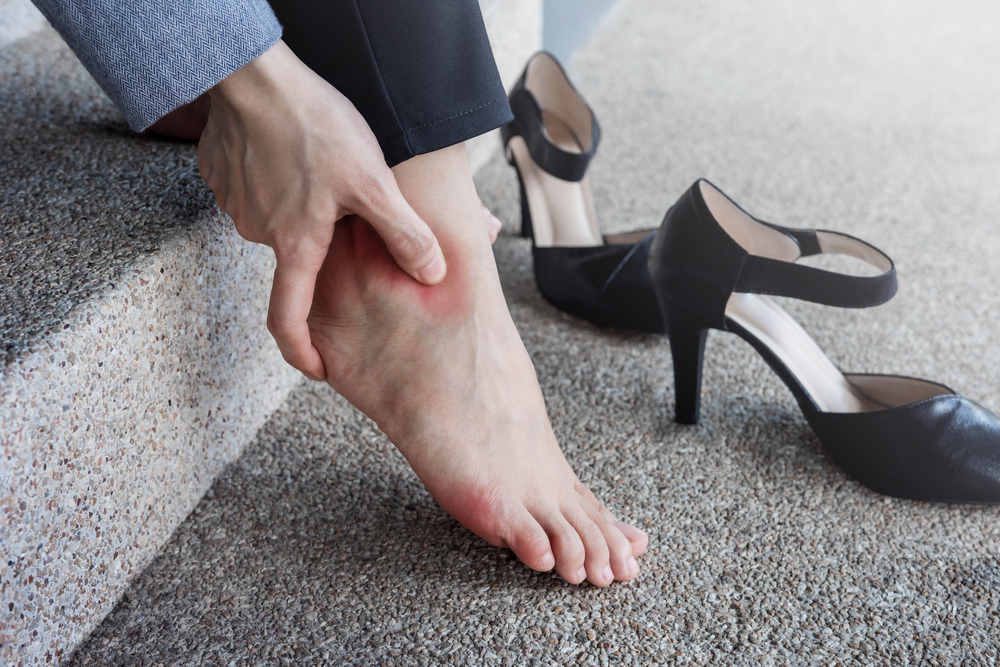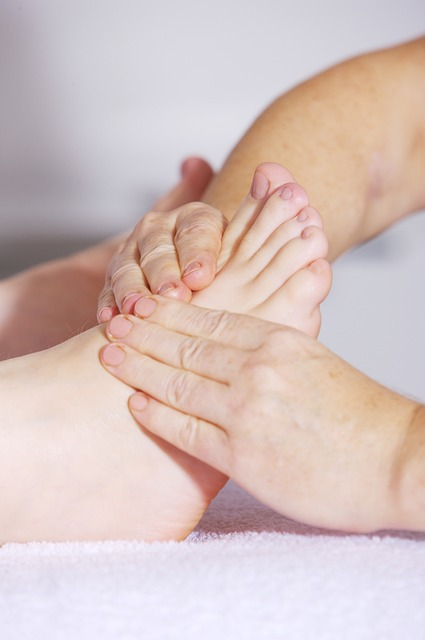Feet-Relief is supported by our audience. When you purchase through one of our links, we may earn a small affiliate commission. As an Amazon Associate I earn from qualifying purchases.Your cost is not affected.
How to Prevent Plantar Fasciitis:
Know the Symptoms, Causes, Treatments, and More
Are you tired of dealing with persistent heel pain that just won’t go away? Plantar fasciitis might be the culprit, and it’s more common than you think. In this blog post, we will explore the symptoms, causes, and treatment options for this frustrating condition, as well as share vital preventative strategies and lifestyle changes on how to prevent plantar fasciitis, to help keep it at bay.
Key Takeaways
- Recognize the symptoms and causes of plantar fasciitis to take appropriate action
- Wear supportive shoes, strengthen feet with exercises & modify activity for prevention
- Seek professional help if pain persists or a gait analysis is needed
Understanding Plantar Fasciitis
Plantar fasciitis is a widespread foot condition caused by the degeneration and inflammation of the plantar fascia, a thick band of tissue that connects your heel bone to your toes. This painful condition, also known as painful heel syndrome, can be incredibly debilitating for some individuals. It often significantly impacts daily lives. While it primarily affects the plantar fascia, it’s worth noting that the Achilles tendon also plays a role in overall foot health and function.
Fighting plantar fasciitis requires a clear comprehension of its symptoms and causes. This knowledge helps you identify the condition early and take the necessary steps to address it before it becomes chronic plantar fasciitis.
Symptoms
The most prevalent symptom of plantar fasciitis is localized heel pain. This common type of foot pain, typically worse in the morning or after prolonged periods of inactivity. This plantar fasciitis pain often presents as a sharp, stabbing sensation near the heel bone. Some people say they feel like they just stepped on a sharp object. As you start moving and walking, the pain may lessen, but it can return after standing for long periods or sitting down and then getting up again.
To diagnose plantar fasciitis, healthcare professionals may use imaging tests, such as X-rays or MRIs, to rule out other potential causes of heel pain. Additionally, they examine your foot for signs of plantar heel pain and other symptoms associated with the condition.
Causes
One of the main causes of plantar fasciitis is repetitive strain on the plantar fascia, often due to overuse, inadequate footwear, or other risk factors. When the plantar fascia becomes inflamed, it can cause significant discomfort and impact your daily activities.
Comprehending the root causes of plantar fasciitis empowers you to act preemptively, addressing these elements to halt the deterioration of the condition. This may involve modifying your activities, wearing supportive shoes, or seeking professional help for a personalized plantar fasciitis treatment plan.
Risk Factors and Prevention Strategies
The first step in thwarting plantar fasciitis is to pinpoint and tackle potential risk factors. By making adjustments to your lifestyle and habits, you can significantly reduce the likelihood of developing this painful condition.
In this section, we will discuss common risk factors for plantar fasciitis and share valuable prevention strategies, such as making informed footwear choices and adopting proper exercise techniques. These strategies can help you avoid the onset of plantar fasciitis and maintain healthy, pain-free feet.
Common Risk Factors
Several factors can increase your risk of developing plantar fasciitis, such as:
- Obesity
- improper shoes (ill-fitting shoes, tight shoes, high heels)
- Tight calf muscles
- High arches
- Occupations requiring prolonged standing
These risk factors place additional strain on the plantar fascia, resulting in inflammation, pain, and potentially leading to a plantar fascia rupture.
Awareness of these risk factors empowers you to tweak your daily routine and lifestyle, minimizing their influence. For example, you can incorporate regular stretching exercises to improve the flexibility of your calf muscles. This helps prevent heel spurs. Also, consciously choose footwear that provides proper arch support and cushioning.
Footwear Choices
The shoes you wear can play a significant role in preventing plantar fasciitis. Supportive footwear with proper arch support and cushioning can alleviate the strain on your plantar fascia and reduce the risk of developing the condition.
When choosing footwear, prioritize shoes with adequate arch support and cushioning to provide comfort and protection for your feet, especially if you have flat feet. This simple choice can make a world of difference in preventing plantar fasciitis and maintaining your overall foot health.
High heels and tight-fitting shoes often contribute to chronic heel pain and other foot problems. Wearing improper shoes may develop plantar fasciitis, bone spurs, or other pain on the bottom of your foot.
Proper Exercise Techniques
Another critical aspect of preventing plantar fasciitis is adopting proper exercise techniques. Gradually increasing the intensity of your exercise routine, incorporating rest days, and avoiding excessive running on hard surfaces can help reduce the risk of plantar fasciitis.
Remember to listen to your body and allow for adequate rest and recovery between workout sessions. By following these guidelines, you can protect your feet and prevent overuse injuries, such as plantar fasciitis. Using night splints can also be helpful in managing the condition.
Strengthening and Stretching Exercises
In addition to addressing risk factors and making informed footwear choices, regularly performing targeted exercises can help prevent plantar fasciitis. By focusing on strengthening and stretching your calf muscles and foot, you can support the plantar fascia and reduce the likelihood of developing this painful condition.
This section explores specific exercises like calf stretches and toe and foot strengthening routines that aid in maintaining strong, flexible, and pain-free feet.
Calf Stretches
Stretching your calf muscles can help improve flexibility and reduce strain on the plantar fascia. By incorporating calf stretches into your daily routine, you can alleviate tension on your plantar fascia and prevent the onset of plantar fasciitis.
The most effective calf stretches for plantar fasciitisinclude the standing calf stretch and calf stretch against a wall. Make sure to hold each stretch for at least 30 seconds and repeat them several times throughout the day for maximum benefit.
Toe and Foot Strengthening
In addition to calf stretches, targeted exercises such as towel curls and toe taps help. They strengthen the muscles supporting the plantar fascia. By regularly performing these exercises, you build a strong foundation for your feet and reduce the risk of plantar fasciitis.
Towel curls involve placing a towel on the floor and using your toes to scrunch the towel towards you, while toe taps involve tapping your toes on the ground while keeping your heel stationary. Both exercises can be easily incorporated into your daily routine and can significantly contribute to maintaining healthy, pain-free feet.
Lifestyle Changes for Plantar Fasciitis Prevention
Implementing certain lifestyle changes can further reduce the risk of developing plantar fasciitis. By maintaining a healthy weight and modifying your physical activities, you can minimize the strain on your plantar fascia and prevent this painful condition from taking hold.
This section delves into vital lifestyle modifications like weight management and activity change, aiding you in mastering plantar fasciitis prevention.
Weight Management
Maintaining a healthy weightcan significantly reduce the strain on your plantar fascia and help prevent plantar fasciitis. Extra weight places additional pressure on your feet, increasing the likelihood of inflammation and pain.
To effectively manage your weight, focus on:
- A balanced diet
- Regular exercise
- Wearing supportive shoes that fit properly
- Engaging in foot-strengthening exercises
By prioritizing weight management, you can minimize your risk of plantar fasciitis and promote overall foot health.
Activity Modification
Another essential aspect of plantar fasciitis prevention is activity modification. Alternating between high-impact and low-impact exercises can help prevent overuse injuries, such as plantar fasciitis.
High-impact exercises include running and jumping, while low-impact exercises involve swimming and biking. By incorporating a variety of activities into your exercise routine and allowing for adequate rest periods, you can protect your feet from excessive strain and reduce the risk of developing plantar fasciitis.
When to Seek Professional Help
Recognizing the right time to seek a healthcare professional’s advice is key to the correct diagnosis and treatment of plantar fasciitis. While many cases can be managed through at-home treatments and lifestyle modifications, sometimes professional intervention is necessary.
In this section, we will explore the warning signs that indicate when it’s time to seek medical help for plantar fasciitis, such as persistent symptoms and the need for a gait analysis.
Persistent Symptoms
If your heel pain persists despite attempting at-home treatments, it is important to seek medical advice for a proper diagnosis and treatment plan. Ignoring persistent symptoms can lead to chronic pain and further complications, making it crucial to address the issue promptly.
A healthcare professional will assess your foot, perform a physical exam, and may recommend imaging tests to rule out other potential causes of heel pain. Based on their findings, they will develop a personalized treatment plan to address your plantar fasciitis and help you achieve relief.
Gait Analysis
A healthcare professional, such as a physical therapist, may recommend a gait analysisto identify any biomechanical issues contributing to plantar fasciitis and recommend appropriate interventions. Gait analysis is the systematic study of human motion and can help detect lower limb dysfunction and inform suitable footwear choices.
By addressing any biomechanical issues identified through a gait analysis, you can take targeted steps to alleviate your plantar fasciitis symptoms and prevent the condition from worsening or recurring.
Avoiding Plantar fascia
Plantar fasciitis is a common and painful condition that affects many individuals. By understanding its symptoms, causes, and risk factors, you can take proactive steps to prevent and manage the condition. Implementing lifestyle changes, wearing supportive footwear, and engaging in targeted strengthening and stretching exercises can significantly reduce the risk of plantar fasciitis. If symptoms persist, don’t hesitate to seek professional help for proper diagnosis and treatment. Remember, taking care of your feet is an investment in your overall well-being.
Frequently Asked Questions
Can plantar fasciitis be avoided?
By maintaining a healthy weight, getting regular exercise and stretching your plantar fascia and calf muscles regularly, it is possible to avoid plantar fasciitis. Additionally, taking a rest from high-impact activity at least once a week and allowing feet time to rest and recover after intense activities can help prevent the overuse and repetition that can lead to plantar fasciitis.
What triggers plantar fasciitis?
Plantar fasciitis is commonly triggered by overuse, such as running long distances or downhill, obesity, occupations that involve standing on hard surfaces for long periods of time, having high or low arches in the foot, and lack of flexibility of the Achilles tendon or calf muscles.
How can I strengthen my feet to prevent plantar fasciitis?
To strengthen your feet and prevent plantar fasciitis, try arch stretches while seated and pulling back on the toes, avoiding high-impact activities, performing foot and leg stretches like untucking bedsheets, massaging your foot using a ball or bottle, and rolling an object under your arch for three to five minutes.
What is the fastest way to cure plantar fasciitis?
For fast relief of plantar fasciitis, rest your feet as much as possible from any vigorous exercise, use high quality orthotic inserts, start a daily stretching routine, and visit your podiatrist. Additionally, maintain a healthy weight, wear supportive shoes, apply ice, stretch your shoulders, and do exercises to help massage your feet.
What is plantar fasciitis pain?
Plantar fasciitis is an inflammation of the plantar fascia, the connective tissue on the bottom of the foot which supports the arch. It is caused by repetitive microtrauma associated with prolonged standing and weight-bearing activities such as running and jogging, and the main symptom is heel pain. Other factors like type of shoes, foot structure and overuse can also contribute to its onset.
Amazon and the Amazon logo are trademarks of Amazon.com, Inc, or its affiliates.

